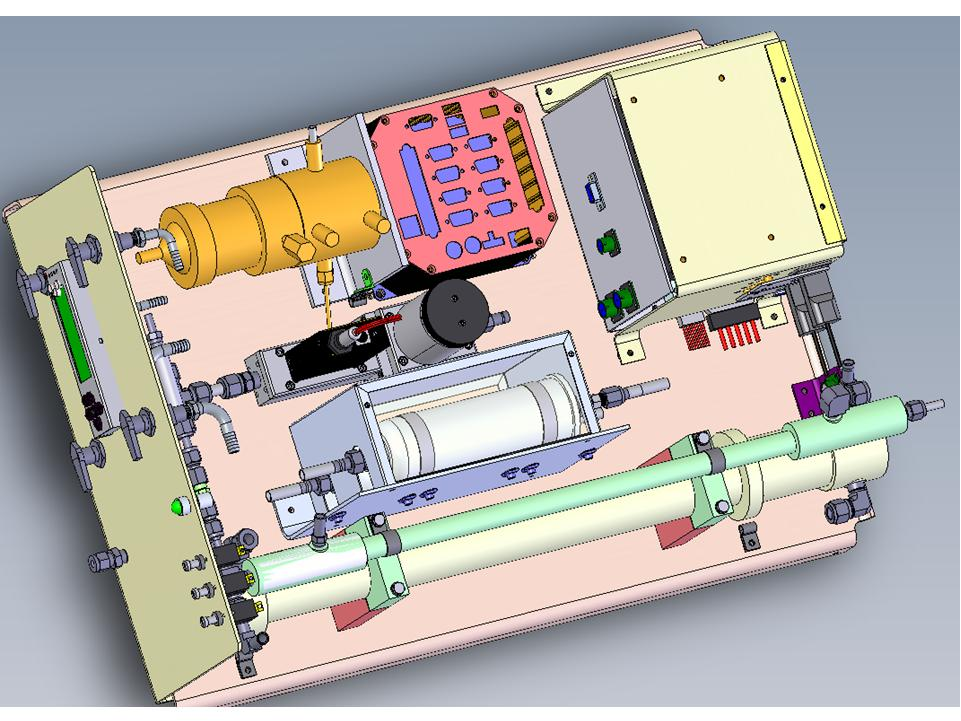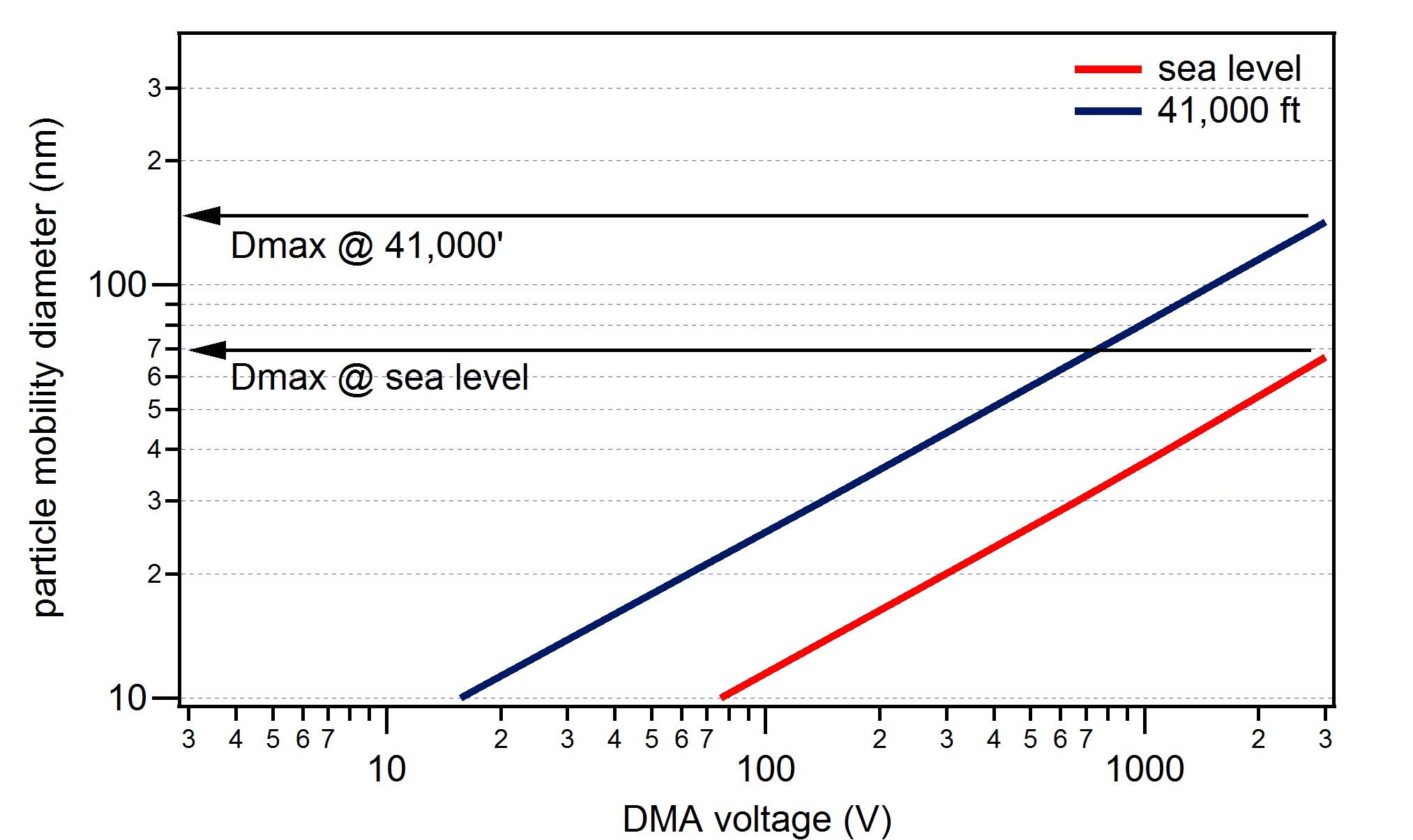Scanning Mobility Particle Spectrometer
The Scanning Mobility Particle Sizer (SMPS) measures the particle size distribution over the mobility diameter range of 3 to 500 nm. The working range is pressure-dependent (see discussion below). The instrument consists of the following components:
- Electrostatic Classifier (EC)
- Condensation Particle Counter (CPC), a commercial instrument manufactured by TSI, Inc., using n-butanol as a working fluid.
- Vacuum pumps, required for both the EC and the CPC.
The Electrostatic Classifier (tubing and filter cover removed for clarity).
The EC samples aerosol-laden ambient air, places a well-defined charge distribution on the particles, and then selects a narrow range of particle “mobility diameter” (approx. equal to cross-sectional area-to-charge ratio) using a differential mobility analyzer (DMA). The selected diameter can be scanned by a time-varying high voltage applied to the DMA; following this particles are counted by the CPC. The total scan time and the number of counting intervals, the latter of which determines the number of diameter bins in the size distribution, are selected based on ambient particle concentrations and altitude. The raw data (particle counts over each counting interval as a function elapsed time during the linear diameter scan) is mathematically inverted during post-processing to obtain the particle size distribution.
The particle size range is dependent on altitude (inlet pressure), DMA voltage range, and the detection limits of the CPC. This relationship is plotted in the following figure:
For this case of a model 3010 CPC, the detection limit is 10 nm in diameter, which sets the minimum diameter in the distribution. The maximum diameter corresponds to a DMA voltage of 3000 VDC, chosen to avoid corona discharge at the lowest expected pressures. Thus the diameter range for this configuration, typical for GV flights, runs from 10 – 70 nm at sea level to 10 – 155 nm at the higher altitudes.

